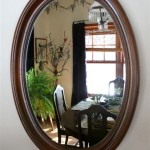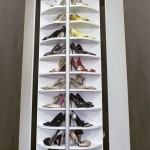Antique Dresser Mirror Frames: A Detailed Exploration
Antique dresser mirror frames represent a rich tapestry of craftsmanship, historical context, and aesthetic appeal. These frames, often overlooked in favor of the mirror itself, serve as vital components that contribute significantly to the overall character and value of an antique dresser. Their construction, materials, decorative elements, and condition all factor into their collectibility and historical significance. Understanding the nuances of antique dresser mirror frames is crucial for collectors, historians, and anyone interested in preserving and appreciating these artifacts of the past.
The history of dresser mirror frames is closely linked to the evolution of furniture design and the changing social customs surrounding personal grooming. Dressers, as specialized furniture pieces for storing clothing and personal items, gradually incorporated mirrors as vanity became more prevalent. Initially, mirrors were separate, standalone items placed on tables. As furniture design progressed, mirrors became integrated, often tilting, featuring intricate frames that reflected the prevailing artistic styles of the period. The materials used in these frames, ranging from solid hardwoods to ornate metals, further reveal the economic and aesthetic priorities of different eras.
This article will delve into various key aspects of antique dresser mirror frames, exploring their materials, styles, identifying marks, and considerations for preservation. By understanding these elements, one can better appreciate the artistry and historical context embedded within these often-underestimated elements of antique furniture.
Identifying Materials and Construction Techniques
The materials used in crafting antique dresser mirror frames provide valuable clues about the age, origin, and quality of the piece. One of the most common materials is wood, specifically hardwoods like mahogany, walnut, oak, and cherry. These woods were prized for their durability, workability, and attractive grain patterns. Softer woods, such as pine, were sometimes used as secondary woods or in less expensive pieces. Identifying the type of wood can often be achieved by examining the grain, color, and density of the material. Expert wood identification may require professional analysis.
Beyond the type of wood, the construction techniques employed reveal further information. Hand-carved details, such as floral motifs, geometric patterns, or figural representations, indicate a higher level of craftsmanship and often point to an earlier date. Machine-made elements, while not necessarily detracting from the value, can suggest a later period of production. The joinery techniques used to assemble the frame are also significant. Dovetail joints, mortise-and-tenon joints, and other traditional methods demonstrate skilled workmanship and overall durability. In assessing construction, consider the precision of the joinery and the overall stability of the frame.
In addition to wood, other materials are frequently incorporated into antique dresser mirror frames. Gilding, the application of a thin layer of gold leaf, was a popular technique for adding opulence and visual appeal. The presence and condition of gilding can significantly impact the frame's value. Metal accents, such as brass or bronze mounts, decorative hardware, and inlaid panels, were also used to enhance the design. The type of metal, its finish, and its integration with the wooden frame contribute to the frame's overall aesthetic and historical character. The presence of veneer, a thin layer of decorative wood applied over a less expensive core, is also a common feature. Understanding the quality and condition of the veneer is important in assessing the frame's overall integrity.
Furthermore, the type of finish applied to the frame can offer clues about its age and history. Early finishes often involved natural oils, varnishes, or waxes. Later finishes might include shellac or lacquer. Identifying the type of finish can be challenging, but the appearance, texture, and reaction to solvents can provide helpful indicators. Original finishes, even if worn, are generally more desirable to collectors than refinished surfaces, as they retain the character and patina of age.
Decoding Styles and Decorative Elements
The stylistic features of an antique dresser mirror frame are crucial for placing it within a specific historical period and artistic movement. Different eras and regions were characterized by distinctive design trends, which were reflected in the shape, ornamentation, and overall aesthetic of furniture. Understanding these styles is essential for accurate identification and appreciation.
For example, frames from the early 18th century, such as those associated with the Queen Anne style, often feature graceful curves, cabriole legs, and relatively restrained ornamentation. Walnut was a common wood, and veneers were frequently used to create intricate patterns. Frames from the mid-18th century, reflecting the Chippendale style, might exhibit more elaborate carvings, including acanthus leaves, shell motifs, and intricate fretwork. Mahogany became increasingly popular during this period, and gilding was often used to highlight the carved details.
Moving into the late 18th and early 19th centuries, the Neoclassical style, influenced by ancient Greek and Roman designs, gained prominence. Dresser mirror frames from this era typically feature symmetrical shapes, straight lines, and classical motifs such as urns, swags, and fluted columns. Satinwood and other exotic woods were favored, and painted decoration became more common. The Empire style, a later iteration of Neoclassicism, often incorporated bolder forms, heavier ornamentation, and the use of gilded elements.
The Victorian era, spanning much of the 19th century, witnessed a proliferation of different styles, ranging from Gothic Revival to Rococo Revival to Renaissance Revival. Dresser mirror frames from this period can be highly ornate, featuring elaborate carvings, intricate inlays, and a variety of materials. Walnut, rosewood, and mahogany were all popular choices, and the use of applied ornaments, such as cast brass or porcelain plaques, was common. The style also featured mass-produced furniture, resulting in more standardized designs and construction techniques.
In the early 20th century, the Arts and Crafts movement emphasized simplicity, functionality, and handcrafted quality. Dresser mirror frames from this period typically feature clean lines, minimal ornamentation, and the use of natural materials such as oak and other native woods. The Art Deco style, which emerged in the 1920s and 1930s, embraced geometric forms, stylized motifs, and the use of exotic materials such as ebony, ivory, and chrome. Dresser mirror frames from this era often feature sleek, streamlined designs and a sense of modern elegance.
Assessing Condition and Identifying Authenticity
The condition of an antique dresser mirror frame is a critical factor in determining its value and desirability. Damage, such as cracks, chips, warping, or missing elements, can significantly detract from the frame's aesthetic appeal and structural integrity. However, well-preserved frames, particularly those with original finishes and minimal repairs, command higher prices and are more sought after by collectors.
When assessing condition, it is important to carefully examine the frame for any signs of damage. Cracks in the wood can be caused by age, dryness, or stress. Chips and dents may result from impacts or mishandling. Warping can occur due to changes in humidity or improper storage. Missing elements, such as carvings, inlays, or hardware, can diminish the frame's completeness and historical accuracy. Any repairs or restorations should be carefully evaluated, as poorly executed work can detract from the frame's value. A documented professional restoration can enhance value, providing photographic evidence and detailed description of the process, materials, and tools used.
Authenticity is another crucial consideration. Determining whether a dresser mirror frame is truly antique requires a combination of knowledge, experience, and careful observation. Examining the materials, construction techniques, and stylistic features is essential. Comparing the frame to known examples from the same period can also be helpful. However, there are other factors to consider.
Identifying marks, such as maker's labels, stamps, or signatures, can provide valuable evidence of authenticity. These marks can often be traced back to specific manufacturers or workshops. However, the absence of a mark does not necessarily indicate that a frame is not antique, as many pieces were never marked. The level of detail in the design is notable. Authentic antique dresser mirror frames often exhibit a level of detail and craftsmanship that is difficult to replicate in modern reproductions. The patina, or surface appearance, of the frame can also provide clues about its age. Authentic antique frames often have a natural patina that develops over time due to exposure to light, air, and handling. However, it is important to note that patina can be artificially created, so careful examination is necessary.
Expert appraisal becomes beneficial in assessing authenticity. Consulting with experienced antique dealers, furniture historians, or conservators can provide valuable insights and assist in determining the authenticity and value of a dresser mirror frame. These professionals have the knowledge and expertise to identify subtle details that may be missed by the untrained eye.
Ultimately, the value of an antique dresser mirror frame is determined by a combination of factors, including its materials, construction, style, condition, authenticity, and provenance (history of ownership). By carefully evaluating these elements, collectors and enthusiasts can gain a deeper appreciation for these artifacts of the past and make informed decisions about their preservation and acquisition.

How To Repurpose An Old Swivel Mirror Confessions Of A Serial Do It Yourselfer

An Antique Chinese Rosewood Dresser Mirror With Pierced Frame Sweden

Large Vintage Vanity Dresser Mirror Swivel Tilt Wood Wishbone Victorian

Tall Antique French Country Dresser Top Swivel Mirror Frame W No

Large Liberty Dresser With Drawers And Mirror Gilt Frame 1940s For At Pamono

An Antique Chinese Rosewood Dresser Mirror With Pierced Frame L 57cm H 47cm

2024 Mantel With Vintage Dresser Mirror Frame Salvage Organized Clutter

Antique Dresser With Mirror Oak Vanity Entryway Piece

Small Antique Dresser With Mirror Midtown Furniture

Antique Victorian Mid Century Broe Dresser Mirror 1940s With Antiques Home Decor Mirrors








